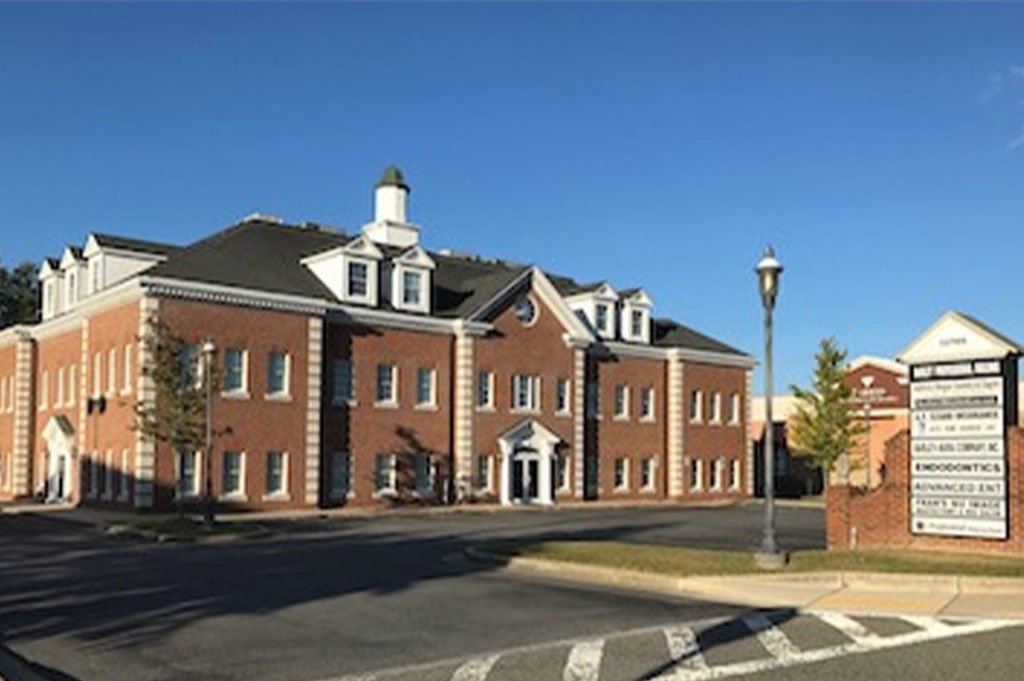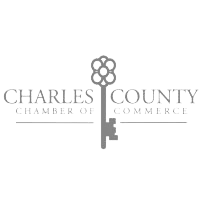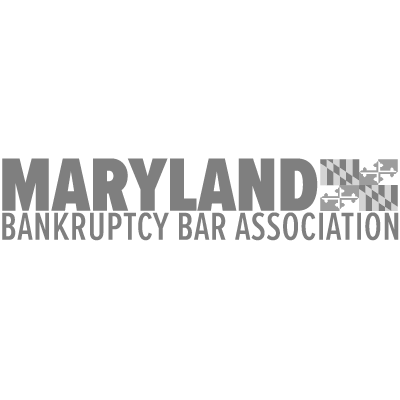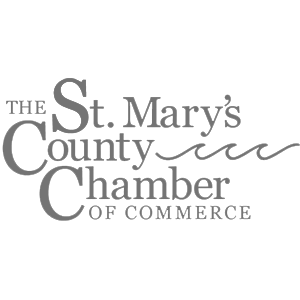What You Need to Know About Bankruptcy in Maryland
The Complete Legal Guide
Do you need a fresh start? Is it time to look at your options? You cannot take action to protect yourself and your family unless you know your options? When you know your options, you can make informed, intelligent decisions and choose the best path.
We are Maryland bankruptcy lawyers, and we wrote this guide so you can quickly & easily discover the answers to your legal questions. Know your options and be informed before you make big decisions about your bankruptcy case – like hiring a lawyer.
You can learn a lot in just 15 minutes by reading this guide now.
Click the question to reveal the answer
This guide covers the most common questions you will have if faced with a bankrupcty case in Maryland. The answers to some of the questions are a bit more complex. If the topic is really involved, we link to a separate blog post on our website that explains the issue in greater detail.
Always keep in mind that we offer a free consultation to anyone who may be thinking about bankruptcy. You have nothing to lose. If you have additional questions, want to go over your personal situation, or just need to come in and discover your options, contact us to schedule an appointment.
This guide was written by David Gormley, a Waldorf bankruptcy attorney at Southern Maryland Law - Andrews, Bongar, Gormley & Clagett in Waldorf, Maryland.
Our Best Advice: This guide contains general information about Maryland bankruptcy law as a helpful resource for the public. Simply reading this guide does not create an attorney-client relationship with our law firm.
Reading this guide is no substitute for hiring an attorney. If you have any serious legal issue, you should get personal advice from an attorney who understands the unique facts of your situation.
We hope you will choose us to handle your Maryland bankruptcy case. If not, at least talk to another attorney who knows what they are doing. That is the best advice we can ever give you.
Many people who are considering filing for bankruptcy in Southern Maryland ask if they have enough debt to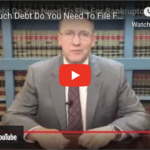
Can you pay your bills? Is it a struggle? Are you always late?
If you answered yes to any of those questions, you should at least get a free consultation to find out if bankruptcy is a good option.
The real question isn’t whether you have enough debt. The questions you need to ask are: (a) what is your debt to income ratio? (b) Do your expenses exceed your income? and (c) What other options do you have to make your debt go away? Your answers to these questions will help us determine if you should file for bankruptcy.
While there is not a set number that tells you if you have enough debt to file for bankruptcy, it is something we can figure out in a free consultation.
When you come in for a consultation, we will review all your options. Along with discussing filing for a Chapter 7 or a Chapter 13 bankruptcy, we may look at your options to refinance or work with a nonprofit credit counseling service.
There are limits on how often you can get a discharge in bankruptcy. So if you are going to file for bankruptcy, you want to make sure it is the right time to use your discharge.
You also want to look at all your options and mare sure that filing for bankruptcy will be the quickest way for your to bounce back from your financial problems. For more information see our post How Much Debt Do You Need To File For Bankruptcy?
Don’t be scared of bankruptcy in Maryland! Bankruptcy is a valid legal tool that you should use when you have the need.
The law has always provided a way to give people a fresh start from oppressive debts.
Did you know that Bankruptcy Courts are specifically called for in the US Constitution? Even the founding fathers knew bankruptcy is sometimes necessary.
If you are struggling with debts, bankruptcy is one of your options. In Maryland, bankruptcy can give instant relief from some major financial problems:
- It will STOP foreclosures.
- It will STOP wage garnishments.
- It will STOP most civil lawsuits.
- It will wipe out your burdensome debts.
- It will wipe the slate clean so you can get a fresh start!
Bankruptcy may be exactly what you need. But bankruptcy is not the right option in every situation. However, sometimes bankruptcy is not a good option. We can tell you if bankruptcy does not fit your situation, and we will help explain your other options.
Maybe you qualify for a loan modification? Maybe you can do a short sale? Maybe you qualify for one of the government programs designed to help families struggling to stay afloat in uncertain economic times?
We can guide you through your options and help you pick the best one for your situation. For more on what to expect during your initial consultation see our post on “What Do I Need To Bring To My Bankruptcy Consult”.
It is somewhat ironic that in order to file for bankruptcy, you have to come up with the money to file. How do you do that when money is tight?
The bankruptcy consultation is free. You should at least get that to find out your options.
If you decide to file, our fee is usually between $1100 and $1400. The amount varies depending on how difficult your case is. That is a flat fee and you can make payments on it.
Sure you can find a bankruptcy mill that will do it for cheaper. We know because we have spent a lot of time over the years fixing the screw ups caused by those other cheap firms. If your case gets screwed up and you have to do it twice, it is going to cost you a lot more money than if you did it right the first time.
It is actually pretty easy to come up with this fee. If you make the decision to file for bankruptcy, then don’t pay anything more on your unsecured debts like credit cards. When you file for bankruptcy, you will be wiping out that debt. So don’t pay them any more money.
Not paying unsecured debts you plan to bankrupt anyway frees up a lot of resources.
However, it is also important that you do not run up the balance on those credit cards either. If you make the decision to file for bankruptcy, don’t pay the credit card company – but stop using the card too.

Most people find they can protect all of their assets in a Chapter 7 (liquidation). If they have too much equity in a house or car in a Chapter 7 they can still file a Chapter 13 (which sets up a payment plan) to protect this asset.
When you file for bankruptcy there are certain assets that are allowed to protect. In bankruptcy world this is called exempting assets. Each State is allowed to set their own exemptions. If you have lived in Maryland for 2 years you can use Maryland’s bankruptcy exemptions.
Common Maryland Bankruptcy Exemptions
- Household Goods & Furnishings $1,000
- Real Or Personal Property $5,000
- Property of Any Kind $6,000
- Qualified Pensions Unlimited
- Homestead Exemption $27,900 (does not double in a joint case)
- Tools Of The Trade $5,000
For more details see our post:
We would love to give you a simple, direct answer. Unfortunately, there is no magic number or simple chart you can use to answer this question.
In order to honestly decide if bankruptcy is a good option for you under Maryland law, we have to do a detailed analysis of your actual debts, income, and assets. That means we have to meet with you.
Bankruptcy is not a “one size fits all” system in Maryland. Any reputable Maryland bankruptcy lawyer will start with this detailed, personal analysis of your unique situation.
We will give you some questions to ask below, but they cannot give you the full picture. If you think you may be eligible for bankruptcy, you should call a Maryland bankruptcy attorney for a free consultation so he or she can take a detailed look at your financial situation. If you are not sure, you can always find out with a free consultation.
(1) Do you have enough debt?
Frankly, if you are even asking the question, chances are you do have enough debt to file for bankruptcy in Maryland. If your debts are not a burden, you would not be asking about bankruptcy and you would not be reading this guide.
(2) Are you unable to pay the mortgage, or do you struggle to pay it?
If you cannot pay your mortgage, or you struggle to pay it while your other debts are increasing, you may need to file for bankruptcy.
Being trapped in a mortgage they cannot afford is the number one reason people are filing bankruptcy in Maryland these days. When the housing market collapsed, most people were left “upside down” (you owe more than your house is worth) and their mortgage rates rose. It is almost impossible to refinance in that situation, and most people cannot sell their house for enough to pay off the mortgage. Bankruptcy is a good option here.
(3) Do you struggle to make payments on your debt every month?
If you have high credit card debt, or medical bills, or other unsecured debt, and the monthly payments are eating up too much of your paycheck, you may be able to get out from that burdensome situation in bankruptcy.
Chances are your credit is already bad. If so, a bankruptcy can wipe the slate clean and put you on a path to recovery.
(4) Have you recently had a major life change?
Did you have a major life change, such as illness, divorce, a layoff or furlough, or a death in the family? These situations can completely change your financial situation.
In this economy, it can be hard to make ends meet when you lose any amount of income. If that happens, do not wait until you start drowning. Click here to learn the very good reasons to file your bankruptcy sooner rather than later, if you are going to have to file one.
The end result of a bankruptcy is to wipe out burdensome debts and give you a fresh start. This is accomplished through the “discharge” you receive at the end of your case.
The discharge releases you from personal liability on your debts, and prevents creditors from taking action to collect the debts. Getting that discharge is the goal of every Maryland bankruptcy case.
Even before getting the discharge, just filing the bankruptcy has immediate effects. It will stop most civil actions against you in any Court. That includes foreclosures, garnishments, debt collection lawsuits, landlord & tenant actions, and more. All your attorney has to do is provide the Court notice of your bankruptcy filing.
It is true that your credit will be affected after filing a bankruptcy in Maryland– but probably not as bad as you think. The bankruptcy can only stay on your credit record for 10 years. After that, it is removed and nobody will even see it happened.
Creditors will even lend you money after a bankruptcy. They will charge you a higher interest rate, but you may be surprised at how easy it is to get a loan after filing for bankruptcy in Maryland. See the details about re-establishing your credit in this post about how bankruptcy affects your credit and how you can rebuild it.
In Maryland, bankruptcy cannot cover every debt, but it does cover most debts likely to be burdensome to you. Here are some debts that you cannot discharge:
- Court ordered child support, or alimony you must pay to an ex-spouse
- Most tax debts
- Student loans
Don’t worry. Most debts are dischargeable in bankruptcy. Examples of burdensome debts you can discharge include:
- Medical bills
- Mortgage debt
- Credit cards & Signature loans
- Monthly bills for services you are behind on
- Any unsecured loans (meaning there is no collateral for the loan)
At the moment you file for bankruptcy, most other legal cases against you are stayed (which is legal lingo for “temporarily stopped”) until the bankruptcy is over, the debts are discharged, or the stay is lifted by the Bankruptcy Court.
To “stay” a case means to put it on indefinite hold. The case does not go away automatically. It just sits on hold.
If the case involves a debt that will be discharged in the bankruptcy, it will indeed go away when you get your discharge. The case will be dismissed. But many other cases can be stayed like foreclosures, landlord & tenant actions, etc.
If the case does not involve an asset involved in your Maryland bankruptcy, the other attorney can ask the Bankruptcy Court to lift the stay – meaning to allow the case to proceed. They have to file that motion with the Court, and wait for the Court to act before they can proceed.
So although you can buy some time by filing for bankruptcy in Maryland, it is not a permanent answer to all your legal troubles – just those debts you can discharge in the bankruptcy case.
See the section on the Automatic Stay above. That includes foreclosures.
A foreclosure is technically a lawsuit. Your foreclosure case will be stayed (stopped) just like any other civil lawsuit.
If you are close to foreclosure, your mortgage payment is likely to be a debt that is handled by the bankruptcy case.
Usually, your arrears (the amount you owe at the time of bankruptcy) will be paid through the bankruptcy plan, and you will start making your regular payments every month to the mortgage company. That enables you to keep the house.
However, you must make your regular mortgage payment after filing the bankruptcy, and will make plan payments each month. An attorney can tell you how much the payments will be, and when they have to start.
If you are facing a foreclosure, learn what you need to know by reading our Free Legal Consumer Guide on Foreclosures by clicking here.
Special note for foreclosures: Do not wait until the last minute to see an attorney. Under the new law, it is harder to run to the Courthouse and file to stop a foreclosure. It may take more time.
You will always know a foreclosure is coming. They have to give you notice. If you get notice of a foreclosure, or even a warning letter, you should consult a Maryland bankruptcy attorney at that time. Do not wait for anything else to happen. You will need all the time you have.
Bankruptcy is federal law. That is why it can stop all state and federal lawsuits. All bankruptcy cases are filed in the U.S. Bankruptcy Court and are controlled by the US Bankruptcy Judges. They have the ultimate say in your bankruptcy case.
Each state has its own bankruptcy court system. The US Bankruptcy Court for the District of Maryland has offices in Greenbelt and Baltimore.
However, most of what these Judges do is administrative. The system uses Trustees to oversee bankruptcy cases.
The Trustee is a lawyer who is appointed by the Bankruptcy Judge to handle the details of your bankruptcy case. They have a LOT of power.
Most of your interaction will likely be with the Trustee instead of the Judge.
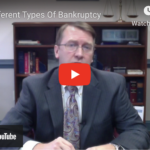
That is why they are called “Chapter 7” or “Chapter 13.” That makes little sense, but lawyers and politicians are not all that creative.
Individuals will usually be concerned with Chapter 7 Bankruptcy or Chapter 13 Bankruptcy. There are other types of bankruptcy that may be used in Maryland, and your attorney can discuss them if they apply to you. But Chapter 7 & Chapter 13 are the big ones.
See below for details on each one.
For more on the different types of bankruptcy, including a video done by Dave Gormley to explain them, see our post What Are the The Different Types Of Bankruptcy.
Chapter 7 bankruptcy is called liquidation. It is usually called for when you have no assets or income from which to pay debtors. The Trustee will take control of your non-exempt assets, sell them if necessary, and pay off creditors if there is any money.
However, that sounds worse than it is. You can keep certain specific property, called “exempt” assets.
Things like your house and your car can be exempt assets (depending on how much equity you have in them). These assets can be shielded from the Trustee as long as you continue to pay for them.
Don’t worry. You do not automatically become homeless or lose your car if you file for bankruptcy in Maryland!
Many of your assets can be exempt depending on their value. Items of smaller value may be exempt just because the Trustee doesn’t want them. For instance, you will even have to list your pet as an asset in your bankruptcy! (But don’t worry. You won’t have to sell her.)
The Trustee is not going to conduct a yard sale of your assets just to get a couple hundred bucks. They are looking for big ticket items that have significant resale value. See our post What Are Maryland's Bankruptcy Exemptions for more details.
In Maryland, the bankruptcy trustee does not try seize everything you own. Most Chapter 7 cases are called “non-asset” cases, because all the assets are exempt. In that case, there is no sale and the debtor just gets the discharge at the end of the case.
The list of exempt assets vs. non-exempt assets is a long list, and it can change. This is a great question to ask a Maryland bankruptcy attorney in a consultation. If you qualify for Chapter 7, you will probably find that most of your possessions remain in your control. See our post Chapter 7 vs. Chapter 13.
For a longer and more detailed look at your bankruptcy options see our post What Are the Different Types of Bankruptcy or the Bankruptcy Court’s Bankruptcy Basics.
Chapter 13 bankruptcy is a repayment plan. It is best for someone with regular income over the means test, and who may want to keep a valuable asset that would otherwise be sold in a Chapter 7 bankruptcy – like your house.
The “means test” involves looking at income and expenses over a certain time period and running some specific guidelines.
This is complicated, and the formula is based on the Maryland bankruptcy court regulations. The numbers are different for each state. A Maryland bankruptcy attorney can figure this out for you.
In Chapter 13, you will put together a repayment plan where you will repay your debtors over time, usually 3-5 years. Your attorney will create the repayment plan. That plan will be filed with the Bankruptcy Court. The Court must either accept it or reject it.
If they accept it (which is the norm), you will make your regular payments to the Trustee, who will pay your creditors for you. You will not usually pay back all of your debt.
Not all creditors will be repaid 100%. Some will receive less – maybe a lot less – depending on the status of the debt (secured, unsecured, priority)
Your attorney can explain the various types of debt and whether it will be repaid. The list is too long for this guide. But here are some general guidelines:
Generally speaking, secured debts are debts where they take the object if you don’t pay, like your house or your car. Those debts get paid at 100%, or you lose the object securing the debt.
Unsecured debts are like credit cards, where the only guarantee was your signature on the application. They are paid last. Certain debts, like taxes and child support, are priority debts and the bankruptcy Trustee will pay them first and in full.
In Chapter 13 bankruptcy, you are protected from lawsuits or garnishments related to the debt while your plan is pending. Once the payments are fully made you will receive your discharge and will be relieved of liability for all your debts, no matter how little the creditor received during the course of the plan.
You may be surprised to find out that you can actually buy a car while your case is in Chapter 13 bankruptcy. Read our post to find out the details.
For a longer and more detailed look at your bankruptcy options see our post What Are the Different Types of Bankruptcy or the Bankruptcy Court’s Bankruptcy Basics.
There are two preliminary steps you must take.
(1) First, hire a Maryland bankruptcy attorney.
You probably cannot do this yourself. You should hire an attorney to file your bankruptcy. It is that complicated.
Before the Bankruptcy Reform Act of 2005, if you had no assets whatsoever you could file your own Chapter 7 case. That is no longer advisable. The 2005 law made bankruptcy a complex process far more involved than just filling out forms. Theoretically, you can still do it yourself, but you will have to be very, very diligent. We do not advise it.
(2) Second, gather documents.
There is a lot we need to know about your debts, income, expenses, etc.
Therefore, you will have to do some homework before you actually file for bankruptcy in Maryland (but you do NOT need all this just to get a consultation).
Here is a list of documents you need to gather eventually, and things we need to know.
- All current sources of income (including paycheck, pension, social security, child support, alimony, etc).
- Documentation of all recent major financial transactions (like the sale of a house or car).
- Itemization of your monthly expenses.
- All of your debts. (Important! If you do not include a debt during the administration of your case, that debt may not be discharged and you will remain liable for it. Be sure you include all debts you owe when compiling this list.)
- Two years of tax returns.
- Deeds and titles to all real and personal property (like the deed to your house, the title to your car, etc.).
- Certificate of credit counseling. When you file for bankruptcy you need to take two classes. For more information on these classes see our post on The Bankruptcy Classes.
You will have to complete an information packet, including a detailed financial statement. The financial statement lists all of your debts, assets and expenses. This packet will be used as the raw data for drafting your bankruptcy petition.
You do NOT need to get all of this in order before seeing an attorney.
You can consult with an attorney at any time, and we encourage you to do so sooner rather than later. You need to know your options, and you should plan ahead in case bankruptcy is the right option for you.
You should at least find out whether you are eligible for chapter 7 or chapter 13, and how to handle your debts now. But you will need all of the items in this list before you can actually file for the bankruptcy.
You can get more details after meeting with an attorney for a free consultation.
After you meet with the attorney and go through the means test, you will know if Chapter 7 or Chapter 13 is right for you.
Then we will give you the financial packet or questionnaire to complete, and you will have to bring us the required documents mentioned above.
There are 8 steps in every bankruptcy in Maryland.
Step 1 – Credit Counseling:
You will have to take a credit counseling class, which can be done online or over the phone. We will provide you the list of approved court counselors and we can recommend a few that other clients have liked. We can walk you through this step.
Step 2 – Draft Petition:
Your Petition for Bankruptcy will be drafted which includes all of your information and is designed to show your current financial situation. A “Petition” is the name of the formal document you file with the Bankruptcy Court to start the bankruptcy process.
Step 3 – File the Petition:
Once the petition is drafted you will need come in to review it and sign it. The petition will then be electronically filed with the US Bankruptcy court in Maryland. Once the case is filed you get a case number, and the automatic stay goes into effect.
If you file a Chapter 13 bankruptcy, a repayment plan will be filed along with the Petition. Your attorney will create the plan, but in general, the plan will look at your net monthly income, subtract reasonable expenses (which are governed by the new bankruptcy statute) and see if there is income left over. If there is, that amount will go to pay your creditors.
Step 4 – Financial Management Training:
Before completing the bankruptcy process, you must take a financial management course. This is in addition to the consumer credit counseling class you already took. A Maryland bankruptcy attorney can help you set up this class as well.
Step 5 – Meeting of Creditors:
After you file your bankruptcy petition, the Trustee will hold a “meeting of creditors.” This is also sometimes called a “341 meeting” because that is the section of the code that governs it.
Before the meeting you will need to provide the trustee with pay stubs, tax returns and bank statements.
You will have to appear at the meeting and the Trustee will interview you. Your attorney will be present for this meeting. Your creditors are allowed to appear and ask questions, but they do not usually show up. For more details on what happens at a 341 meeting, click here.
The Trustee and the creditors will be trying to make sure you have disclosed all of your assets. The Trustee will ask you questions about your assets and debts, to confirm the information in your bankruptcy petition is true.
Step 6 – Waiting:
After the meeting, the Trustee and the creditors have 60 days to object to your right to a discharge. This does not usually happen, as long as your bankruptcy petition is accurate. Your attorney will handle it if it does happen.
If there is a dispute over the plan the case may have to go to a confirmation hearing in front of a bankruptcy judge.
Step 7 – Confirmation Hearing:
For Chapter 13 cases only – If you file a Chapter 13 bankruptcy, a Confirmation Hearing will be held to determine if the repayment plan filed with your petition will be confirmed or denied.
If your plan is confirmed, you will pay according to the plan and any debts left over when the plan is finally paid will be discharged. You get your discharge after you complete the plan payments.
If the plan is denied, you will get a chance to amend the plan. If your plan cannot be confirmed, it will be dismissed and you will back to square one as if you never filed.
Step 8 – Discharge:
If you filed chapter 13 bankruptcy, you get your discharge when your plan payments are concluded. This could take 3-5 years, depending on how long your repayment plan lasts.
If you file Chapter 7 bankruptcy, the Bankruptcy Court will grant your discharge as long as nobody objects after your meeting of creditors, or if you get the Judge to approve it even if someone objects.
This will usually happen 30 days after the creditor’s deadline to file objections, which is usually 4 months or so from the date you file the bankruptcy (as long as there are no assets for the Trustee to sell, which would obviously delay the proceedings). For more information see our Road Map of a Bankruptcy Case.
Filing for bankruptcy in Maryland will probably not affect your credit as much as you think. If you are in a situation where bankruptcy is an option, your credit is probably bad already.
Most credit reports only show information going back 10 years. So the bankruptcy will stay on your credit report for 10 years, BUT it won’t keep you from getting credit that whole time.
After your bankruptcy, if you pay your bills on time for 18 months to 2 years, you will re-establish your credit rating and people will loan you money again. They may charge you a slightly higher interest rate, but they will loan you the money.
For more details on how to re-establish your credit after a bankruptcy, see our post here.
You may be surprised to learn that you are not necessarily prevented from buying real estate after you have filed for bankruptcy.
You can and will qualify for a mortgage after a bankruptcy. Click here to read our post explaining how a Maryland bankruptcy affects your ability to get a mortgage, and how to make a plan to get your credit to the point where you are able to get a mortgage.
If you are concerned about your VA eligibility after filing bankruptcy, click here to see our video presentation where Dave Gormley talks with local realtor Seanna Smallwood.
If you are considering a short sale of your house, click here to see a video where Dave Gormley discusses this issue with a realtor. There was a federal law to help with this, but it expired in 2014.
If you are a realtor or real estate professional, you should click to here for a special presentation on Bankruptcy Basics for Real Estate Professionals. We have a slide show and video presentation that will tell you everything you need to know.
You can see that a Maryland bankruptcy attorney is probably going to be necessary to file a bankruptcy in Maryland. It is a very complicated system these days.
We honestly cannot advise you to handle your own bankruptcy case in Maryland. There are too many potholes and pitfalls to try this without a bankruptcy attorney.
For more information on the perils of trying to represent yourself see the United States Bankruptcy Court’s guide to Filing Without An Attorney.
The petition must be complete and done in a proper manner. Then it must be filed electronically, and in a specific format. If you are doing a chapter 13 bankruptcy, you must propose a repayment plan.
Only an attorney with experience before the bankruptcy court can possibly know what plan will be acceptable. Assuming they accept your petition, you have that meeting of creditors where the Trustee (and maybe attorneys from your creditors) will grill you. After that, you may be in front of a federal bankruptcy judge for a confirmation hearing.
It is easy to see how complicated all of this is. An attorney is almost a mandatory requirement if you are considering filing bankruptcy in Maryland.
There are a limited number of attorneys who handle bankruptcy cases in Maryland. We have been handling bankruptcy cases in Southern Maryland for 30 years. We know what we are doing. We charge a fair and reasonable price in line with other competent bankruptcy attorneys.
Beware the super cheap bankruptcy options you may see advertised! You will not get much service from an actual attorney, and your case may get hopelessly screwed up.
We have been called on to rescue a number of bankruptcy cases that some cheap bankruptcy mill screwed up. That just costs you more grief, more stress, and more money!
Bankruptcy consultations are always free at Andrews, Bongar, Gormley & Clagett. They are also required because we cannot properly advise you on the best course of action unless we talk to you about your personal situation.
We have a ton of other resources for our clients about bankruptcy law & the legal process. Click this link to our Client Resources page for an in depth explanation of everything you need to know.
Get More Free Legal Advice!
Like free legal advice? We have a LOT more of it available right here on our website. Click this link to discover all of the free legal advice we offer in blogs, videos, newsletters, social media, etc. We think you should always know your options, be informed, and protect yourself when facing any legal issue. Use this website as a community resource. It is part of how we give back to our community!


 If you have a legal issue things you do now will affect your case later. You should always know your options and be informed before you make major decisions about your legal case.
If you have a legal issue things you do now will affect your case later. You should always know your options and be informed before you make major decisions about your legal case.

